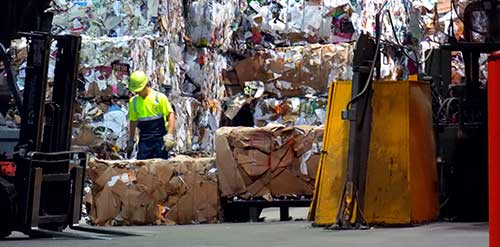Hyundai Motorstudio Senayan Park
Hyundai Motorstudio Senayan Park
Newsroom
The official news from Hyundai Motorstudio Senayan Park and a collection of innovative articles on mobility and sustainability here.
-
Waste Definition, Characteristic and Its Type
- Hyundai Motorstudio Senayan Park Senayan Park 2022.06.21
-
Along with garbage, waste is the largest type of pollutant that is responsible for environmental damage. But garbage is different from waste from its characteristics.
Waste, whatever its form, presents a variety of problems. Apart from bringing bad consequences to the nature, waste also triggers economic and social problems. That is why waste must be prevented as much as possible.
This can be done by understanding the basics knowledge such as the waste definition, its types, and characteristics. From here, the waste management process can be started.
Definition of Waste
Simply to say, waste is a residue. But the development of industry makes the definition of waste more ambiguous so that it cannot be made that simple.
Waste is the remaining raw material of the production process. Because it is a residue from industrial activities, it is also called an industrial waste. There are various forms of waste, such as vapor and gas, but the most common is liquid.
Take an example of garment waste. Compared to other types, liquid waste has a massive destructive power due to its permeable nature. The bad effects are not limited for the surrounding environment, but to the wider ecosystem.
Especially if the waste is carried away by the river currents, the surrounding water ecosystems are disturbed. But not all residue ends up as waste, some can even be recycled and reused into other products that have an economic value. But this only applies to certain types of waste.
That is why garbage is not always classified as waste. But what is waste, is definitely garbage. This is what makes the definition of waste even more difficult to understand.
Waste Type
Waste can be classified into anything, such as organic and non-organic, degradable and non-degradable, recycle and non-recycle. Just because the majority of waste is industrial residue, it’s divided into more specific types.
1. Household Waste
Household waste is the unused products from household activities. The forms can vary, be it organic and non-organic, degradable and non-degradable. Depending on the product, some household waste can be classified as hazardous waste.
That is why it is important to segregate the waste to handle it properly. Examples of household waste are plastic which are non-organic and non-degradable, or fruit which is classified as organic and degradable.
Meanwhile, solvents, batteries, unused medicine, and several electronic devices are classified as hazardous waste produced by households.
2. Clinical Waste
Also known as medical waste, clinical waste is generated from the activities of hospitals or other health facilities. Clinical waste is dangerous because it can infect, a used syringes and mask waste for example.
However, medical waste is not always classified as dangerous, but it still needs to be handled with certain procedures, such as plastic wrapping for syringes.
3. Hazardous Waste
Hazardous waste is defined as waste that is harmful to humans and the environment. Apart from industry, hazardous waste is also generated by households. Including the hazardous waste group are chemical compounds with a high acidity level.
Due to its nature, it requires special methods and equipment depending on the level of danger. Basically, any waste that harms living things can be categorized as hazardous waste.
Examples of hazardous waste are batteries, solvents, oil, and lamps. Hazardous waste needs to be handled differently, including for storing and disposing.
4. Agricultural Waste
The remaining products from agricultural activities are called agricultural wastes. Depending on the type, agricultural waste can be organic or non-organic.
Organic agricultural waste includes leaves and branches, or rice husks. Manure or compost that is used as a natural pesticide also falls into this category.
Agricultural waste that is non-organic is generally dangerous because of its substance. The examples are plastic used to cover the soil on chili plants, pesticide containers, and pest medicine.
5. Radioactive Waste
Radioactive waste has radioactive content so it is categorized as non-organic and non-recycled. This type is rated as the most dangerous. Even the handling cannot be done independently, special tools are needed according to the level of danger.
Radioactive waste is divided into three categories: low, medium, and high. Each category requires different handling. For instance, nuclear energy is classified as high-level radioactive waste.
6. Controlled Waste
It is a type of waste that is controlled by an institution. It comes from various activities such as commercial, industrial, and household. Including the controlled waste are hospitals, prisons, and other institutions.
Apart from the source, controlled waste has a limited substance in certain materials. For instance, plastic must contain a certain percentage of polyvinyl chloride to be safe.
7. Listed Waste
Under the classification of hazardous waste, listed waste is divided into four categories, depending on the chemical content in it.
U-listed waste is a toxic waste with reactive, corrosive, and flammable characteristics. Waste in this category contains acetone, ethylene oxide, chloral hydrate, mercury, formaldehyde, and phenol.
P-listed waste is the most toxic waste, it can even cause death even just a drop. Included in this classification are residual products containing arsenic, epinephrine, and warfarin.
K-listed waste is B3 waste from the production process of pesticides, dyes, wood, and paper. It can be solid and liquid.
F-listed waste does not have a specific source, it can come from anywhere. The most common examples are solvents and chemical baths.




